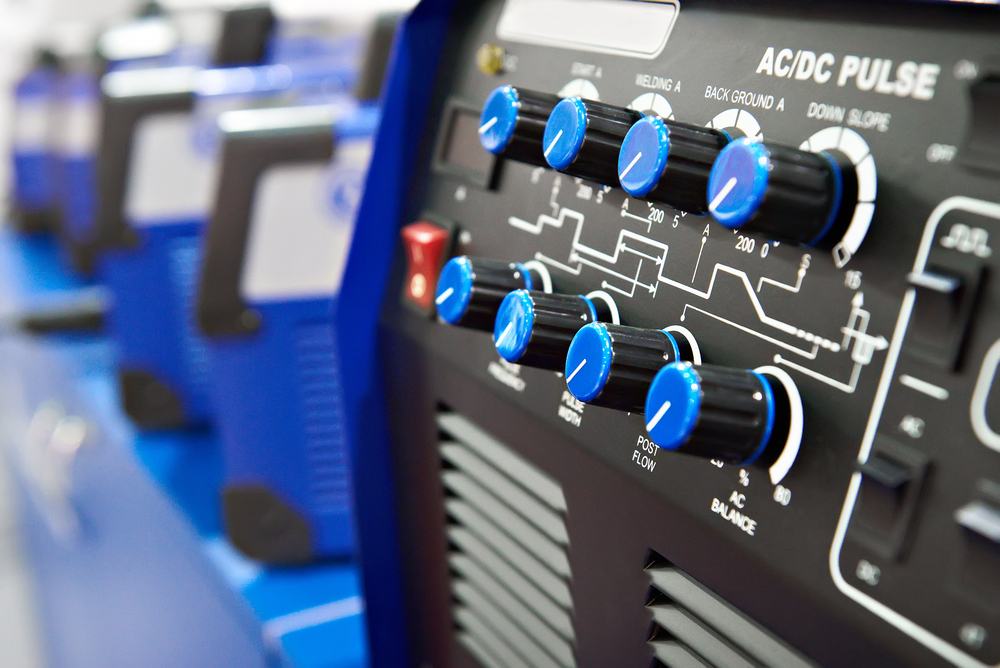
Alternating current (AC) and Direct current (DC) – the types of electric current– are common knowledge in studying an electric circuit. The direction of flow of the electric charges differentiates these currents. This direction of current flow also has an impact on how the arc is produced during welding. Therefore, the welders must select the correct type of current parameter based on the type of metal, its thickness, metallurgical properties, and the depth of penetration desired.
The choice of alternating current vs direct current welding dictates the quality and reliability of the weld. Let’s explore how the choice between the two affects the metal in use and its properties during welding.
Alternating Current vs Direct Current Welding
The polarity of these currents is the significant difference in alternating current vs direct current welding. Polarity indicates whether the current flows from the positive to a negative pole or vice versa. When the wrong polarity is used for welding, the result is poor penetration, varying arc length and heat input, spatters, and irregular weld beading.
It is, thus, essential to understand if your welding machine is AC or DC and how it affects the metallic properties and its performance during welding.
Alternating Current Welding
Whenever alternating current is used, there is a constant change in polarity. To be precise, the direction of the electron flow changes every 1/120 of a second. As a result, the overall flow of current is in one direction for half the time and the opposite direction in the other half. The constant fluctuation means the arc is less stable, which is unsuitable for welding metals like stainless steel.
However, this nature of AC welding is suitable for arc welding metals like aluminum. This is because AC welding can effectively break apart the oxide layer of aluminum in its positive cycle and simultaneously ensure weld penetration in its negative cycle. This breakdown process would have otherwise required a high heat level which is an unsuitable option when working with aluminum.
Here are some more advantages of using alternating current for welding–
- The arc is more stable when AC welding, which is advantageous for magnetic metals.
- AC welding process is economic in comparison to DC welding
- AC welding reduces the risk of arc blow.
Direct Current Welding
DC welding is a more common choice in the industry than AC welding. As the current is direct, there is no constant switch in polarity (i.e., the current flow is unidirectional– from positive to negative or vice versa.) Electrode positive is ideal when deeper penetration is required while electrode negative offers a faster rate of deposition. Since there is no constant fluctuation in the direction of current flow, DC welding produces a more stable arc when welding.
Here are a few more advantages of opting for direct current welding–
- The stable arc produces consistent and smooth welding.
- The faster deposition rate is suitable for welding thin pieces of metal.
- There is a low likelihood of spatters or inclusions being trapped in the weld pool.
- It is easier to strike the arc compared to when AC welding.
- It is suitable for overhead or vertical welding applications.
Its stable and intense electric arc is beneficial for welding metals like steel and titanium.
Identifying The Best Option – AC or DC Welding?
In comparing alternating current vs direct current welding, both options have their upside and downside. While AC welding reduces the issue of arc blow, it doesn’t do much for reducing spatter. On the other hand, DC welding is much more stable and smooth but investing in AC welding machines is not as economical as AC welding equipment.
Most welders opt for DC welding due to its stability and quality result. However, there has also been technological development to improve the outreach of AC welding. For instance, technology like the square wave inverters enables rapid switching of polarities, facilitating consistent weld profile during TIG welding.
For large pipelines to small tubing projects, from titanium to stainless steel, AMI has been offering a wide range of orbital welding solutions for decades. Our DC welding equipment and selection of tungsten electrodes for AC or DC current types have been the choice of welders across industries for their consistency and reliability. Once you decide between alternating current vs direct current welding, you can always opt for our solutions for a high-quality and productive result.
Arc Machines, Inc., a leading provider of orbital welding solutions, provides a range of power supplies, weld heads, and tungsten electrodes to help you achieve the best result whether you are performing AC or DC welding. To learn more about alternating current vs direct current welding or for product inquiries, contact sales@arcmachines.com. For service inquiries, contact service@arcmachines.com. Arc Machines welcomes the opportunity to discuss your specific needs. Contact us to arrange a meeting.




